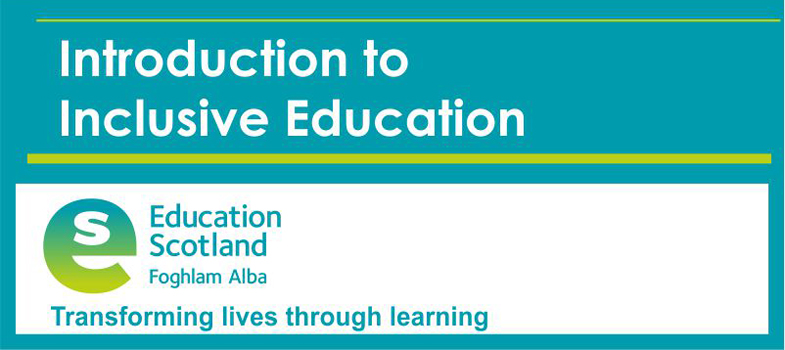2.2 Equality
Section 1 highlighted the range of equalities legislation in Scotland relating to race, gender, age, disability, religion or belief and sexual orientation.
What does equality mean?
Equality is described as the removal of discrimination, disadvantage, inequality and / or barriers which can affect people on the grounds of the protected characteristics set out in the Equality Act 2010: age, disability, gender, gender reassignment, pregnancy and maternity, race, religion or belief and sexual orientation. The public sector equality duty also covers marriage and civil partnerships, with regard to eliminating unlawful discrimination in employment and therefore schools and education authorities do not have a responsibility as learners are not employees.
The Equality Act 2010 also gives the duty to advance equality of opportunity between people who share a protected characteristic and those who do not and to foster good relations between them.
Activity 4
Copy the table into your Reflective Log and match the terms with the correct explanations.
| Term | Insert the correct letter e.g. A, B, C | |
| Inclusion | ||
| Equality | ||
| Equity | ||
| Factors giving rise to barriers to learning | ||
| Curriculum | ||
| Children’s rights | ||
| Rights and entitlement to identification and support | ||
| A | The learning environment, health and disability, social and emotional factors and family circumstance. |
| B | Entitlements to fundamental human dignity. They are: Universal – and they apply to every child Interrelated, interdependent and indivisible – all the articles of the UNCRC are linked and should be read alongside each other to provide the full range of a child’s entitlement to dignity Inalienable and inviolable – children's rights cannot be given or taken away: they are innate to the humanity and personhood of each child. |
| C | All of the experiences which are planned for children and young people through their education and includes all that is planned for children and young people throughout their education, not just what happens in the classroom. |
| D | Treating people fairly, but not necessarily treating people the same. Equity in education means that personal or social circumstances such as gender, ethnic origin or family background are not obstacles to achieving educational potential and that all our young people are well supported to secure wellbeing, skills for learning, life and work and the best possible post-school destination, HGIOS 4 (2016). Equity is generally understood to refer to fairness and impartiality for people in general and sometimes especially relating to fairness for people facing socio-economic disadvantage. |
| E | Taking positive action and intervening in order to enable achievement for all by building and fulfilling the potential of every child, young person and adult. |
| F | The removal of discrimination, disadvantage, inequality and / or barriers which can affect people on the grounds of the protected characteristics set out in the Equality Act 2010: age, disability, gender reassignment, marriage and civil partnership, pregnancy and maternity, race, religion or belief, sex and sexual orientation. The Equality Act 2010 also gives the duty to advance equality of opportunity between people who share a protected characteristic and those who do not and to foster good relations between them. |
| G | Is divided into two phases: the broad general education and the senior phase. The broad general education begins in early learning and childcare (at age 3) and continues to the end of S3 (the third year of secondary school). Its purpose is to develop the knowledge, skills, attributes and capabilities of the four capacities of Curriculum for Excellence for learners who do not have additional support needs. |
| H | The Education (Additional Support for Learning) (Scotland) Act 2004 provides the legal framework for the provision of additional support for learning. It is the responsibility of all teachers to support learners. |
| I | The home environment, health and disability, social and emotional factors and family circumstance. |
Click to reveal the correct answers.
Answer
Inclusion
| E Inclusions means taking positive action and intervening in order to enable achievement for all by building and fulfilling the potential of every child, young person and adult. |
Equality
| F - Equality is the removal of discrimination, disadvantage, inequality and / or barriers which can affect people on the grounds of the protected characteristics set out in the Equality Act 2010: age, disability, gender reassignment, marriage and civil partnership, pregnancy and maternity, race, religion or belief, sex and sexual orientation. |
| Equity | D - Equity means treating people fairly, but not necessarily treating people the same. Equity in education means that personal or social circumstances such as gender, ethnic origin or family background are not obstacles to achieving educational potential and that all our young people are well supported to secure wellbeing, skills for learning, life and work and the best possible post-school destination, HGIOS 4 (2016). Equity is generally understood to refer to fairness and impartiality for people in general and sometimes especially relating to fairness for people facing socio-economic disadvantage. |
Factors giving rise to barriers to learning
| A The learning environment, health and disability, social and emotional factors and family circumstance. |
Curriculum
| E All of the experiences which are planned for children and young people through their education and includes all that is planned for children and young people throughout their education, not just what happens in the classroom. |
Rights and entitlement to identification and support
| B Entitlements to fundamental human dignity. They are: Universal – and they apply to every child Interrelated, interdependent and indivisible – all the articles of the UNCRC are linked and should be read alongside each other to provide the full range of a child’s entitlement to dignity Inalienable and inviolable – children's rights cannot be given or taken away: they are innate to the humanity and personhood of each child. |
2.1 Inclusion
